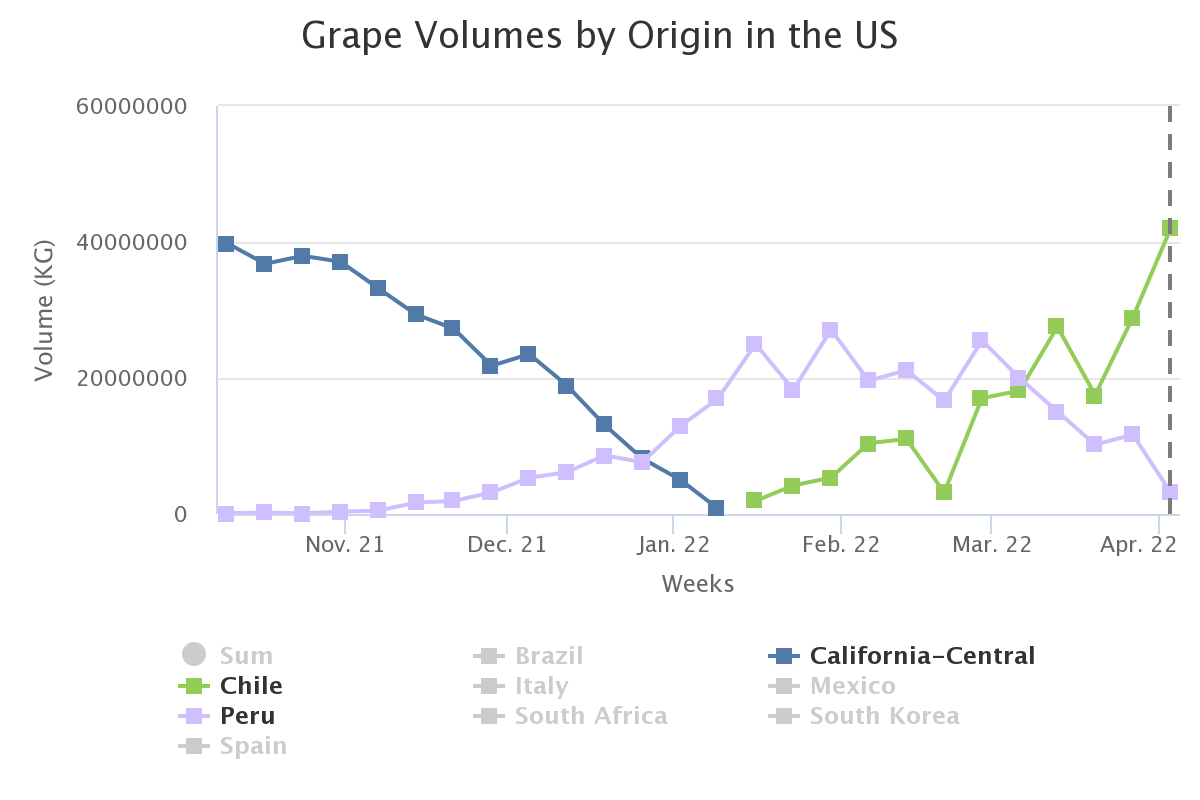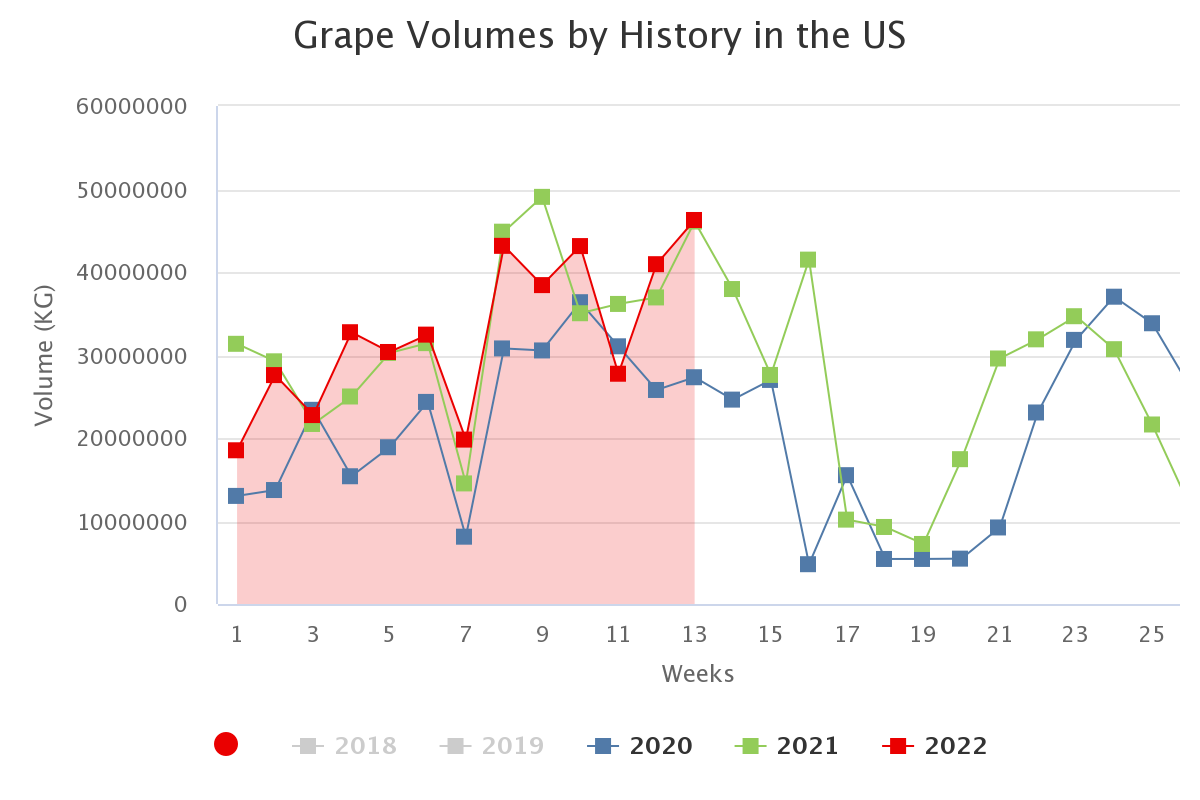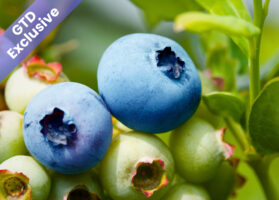Peru table grapes: “one of the best performing product seasons to date”, says Vanguard
Overview of table grapes in the U.S. market, complemented by charts from Agronometrics. Original published on April 06, 2022.
Vanguard International said that the recent 2021-22 season for Peru table grapes was “one of the best performing product seasons to date”, in terms of fruit condition, with excellent weather conditions and strong demand throughout. Logistics issues were the primary challenge.
The demand for Peru table grapes was strong until recently, benefiting from an early exit of California fruit and a late arrival of Chilean table grapes. New green seedless varieties still enjoy great demand and are less susceptible to dramatic drops in pricing, the company said.

Source: USDA Market News via Agronometrics.
(Agronometrics users can view this chart with live updates here)
The harvest ended on March 8, but the company said that one third of its harvest is still en route to its destination due to delays in the supply chain, which the company said has been on of the most dramatic on record.

Source: USDA Market News via Agronometrics.
(Agronometrics users can view this chart with live updates here)
“Despite so many positive returns to the vine, this has been the most challenging season ever faced by our industry in general from an export global market perspective”, the statement said.
Extended transit times, port congestion, delayed releases, a lack of trucks and drivers all contributed to this challenge.
“We have heard stories from others who have had their shipments sit for 17 days on a vessel, that is on top of the 21-day transit time,” the statement said.
The company said that the complications have forced it to make advancements in efficiency from the field level onward. For green varieties, this meant changes in how it manages the placement of bunches.
“This was overhauled to ensure quality canopy coverage on bunches to avoid amber spots or sunburn. We picked at a peak point to optimize shelf life and our picking process was much faster,” the statement said.
Changes at the packinghouse also allowed it to reduce storage and dispatch times by 5-7 days, which allowed the company to mitigate some of the delays from the supply chain.
The company also said that it lead a transparency process with its local labor structure and authorities.
“The position we have taken with the community is to give an alternative voice to handle labor the right way. Our key management team has been very involved with local labor leaders and authorities to address concerns and make improvements,” the statement added.
The News in Charts is a collection of stories from the industry complemented by charts from Agronometrics to help better tell their story.
Access the original article with this (Link)






